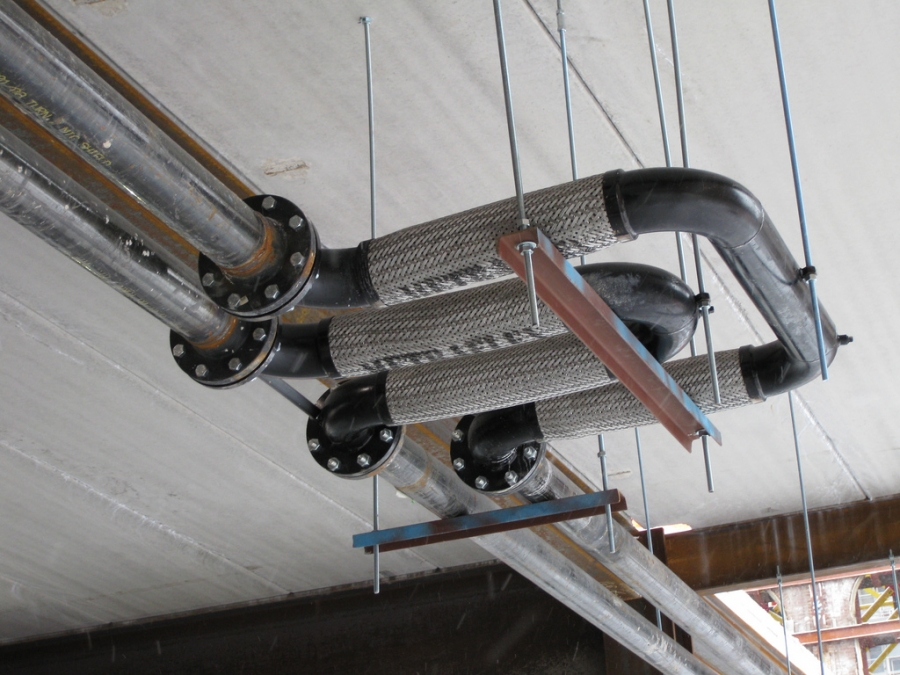Expansion Fittings and Loops for HVAC Piping
Expansion fittings and loops may be required in any piping system which contains fluids with temperatures elevated above normal room temperature. Most piping in commercial systems is comprised of metals; common piping materials include copper, black iron, steel and stainless steel. When heat is applied to metal, it undergoes thermal expansion. The rate of expansion depends upon the metal and the heat being applied. In piping, there are two directions in which thermally expansion can take place: circumferential and longitudinal. Circumferential lengthening is negligible and therefore is not a concern. But longitudinal expansion, depending on how long a pipe is run, can be several inches or more. Because piping is rigid, if the change in length is not provided for via expansion fittings or loops, the pipes can shear the connections and cause ruptures. Different metals expand at different rates, but all expand with the addition of heat. Expansion fittings and loops allow the piping to expand without failure.
 Credit: Flickr | speric | CC 2.0
Credit: Flickr | speric | CC 2.0
Topic Summary
There are several types of fittings and loops which can be utilized to compensate for the change in length. Each type of fitting or loop has a different purpose. Among the conditions which govern the type of fitting or loop utilized are the weight, the material, the size, the length, the supports, the space available, the pressure and the temperature.
Each piping system will have pipe anchors and guides. The anchors fix the piping so that it will not move, while the guides restrain lateral movement but allow longitudinal movement. This constrains the expansion of the piping and directs it toward the loop. The loop is designed to absorb the expansion.
Systems which may require expansion protection include, but are not limited to: low pressure steam, medium pressure steam, high pressure steam, heating hot water supply, heating hot water return, domestic hot water supply (105 degree, 140 degree, and 180 degree) and domestic hot water return.
The installation of piping loops depends on what each engineer has specified; the local, state, and national building codes; the space constraints of the facility; the contractor’s own best practices; and the manufacturer of the products used to facilitate the installation.

Buildipedia Staff
The Buildipedia research and writing staff consists of dozens of experienced professionals from many sectors of the industry, including architects, designers, contractors, and engineers.
Website: buildipedia.com/


